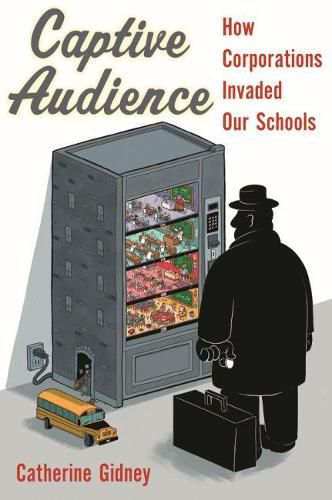Readings Newsletter
Become a Readings Member to make your shopping experience even easier.
Sign in or sign up for free!
You’re not far away from qualifying for FREE standard shipping within Australia
You’ve qualified for FREE standard shipping within Australia
The cart is loading…






White Spot, a popular BC restaurant chain solicits hamburger concepts from third and fourth grade students and one of their ideas becomes a feature on the kids’ menu. Home Depot donates playground equipment to an elementary school, and the ribbon-cutting ceremony culminates in a community swathed in corporate swag, temporary tattoos, and a new Home Depot song written by a teacher and sung by the children. Kindergarten students return home with a school district-prescribed dental hygiene flyer featuring a maze leading to a tube of Crest toothpaste. Schools receive five cents for each flyer handed to a student.
While commercialism has existed in our schools for over a century, the corporate invasion of our schools reached unprecedented heights in the1990s and 2000s after two decades of federal funding cuts and an increasing tendency to apply business models to the education system. Constant cutbacks have left school trustees, administrators, teachers, and parents with difficult decisions about how to finance programs and support students. Meanwhile, studies on the impact of advertising and consumer culture on children make clear that the effects are harmful both to the individual child and the broader culture. Captive Audience explores this compelling history of branding the classroom in Canada.
$9.00 standard shipping within Australia
FREE standard shipping within Australia for orders over $100.00
Express & International shipping calculated at checkout
White Spot, a popular BC restaurant chain solicits hamburger concepts from third and fourth grade students and one of their ideas becomes a feature on the kids’ menu. Home Depot donates playground equipment to an elementary school, and the ribbon-cutting ceremony culminates in a community swathed in corporate swag, temporary tattoos, and a new Home Depot song written by a teacher and sung by the children. Kindergarten students return home with a school district-prescribed dental hygiene flyer featuring a maze leading to a tube of Crest toothpaste. Schools receive five cents for each flyer handed to a student.
While commercialism has existed in our schools for over a century, the corporate invasion of our schools reached unprecedented heights in the1990s and 2000s after two decades of federal funding cuts and an increasing tendency to apply business models to the education system. Constant cutbacks have left school trustees, administrators, teachers, and parents with difficult decisions about how to finance programs and support students. Meanwhile, studies on the impact of advertising and consumer culture on children make clear that the effects are harmful both to the individual child and the broader culture. Captive Audience explores this compelling history of branding the classroom in Canada.